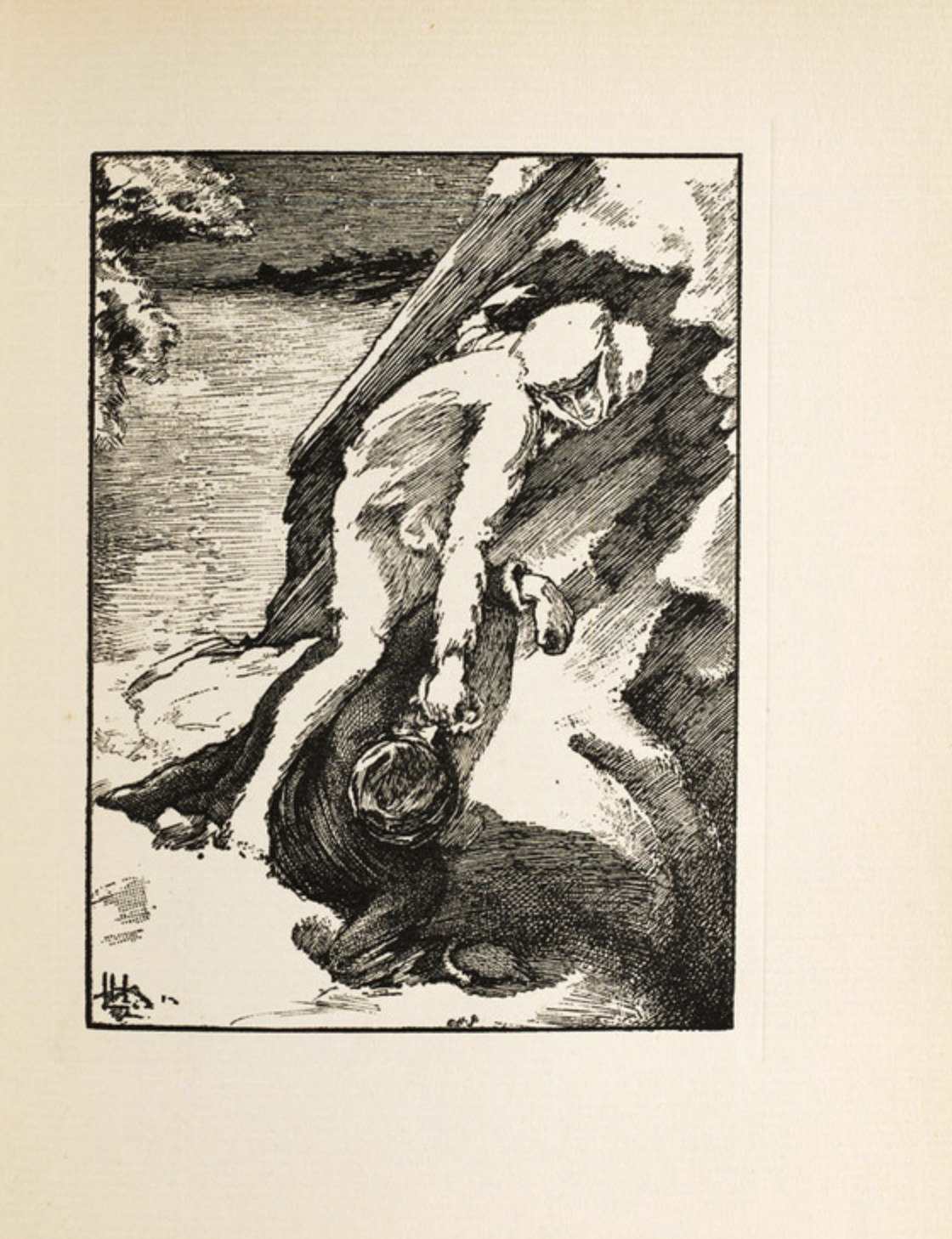Created by Alessia Dickson on Sun, 10/18/2020 - 17:56
Description:
Clemence Housman’s, The Were-Wolf was first published in 1890 in Atlanta magazine, a progressive publication geared towards a female audience. The Were-Wolf was later published as a standalone novel in 1896 where Clemence collaborated with her brother Laurence. Utilizing her skills as a wood engraver, Clemence engraved all six of Laurence’s full paged illustrations, including the one seen above, titled The Finish (pg 102). In this scene, White Fell, the were-wolf, is fighting with Christian who had been attempting to kill White Fell to save his twin Sweyn. White Fell, who has nearly transformed into a wolf, looms over Christian with an ax in her left hand, ready to kill him. The illustrated power struggle of White Fell physically dominating Christian deviates from the patriarchal and heavily gendered expectations of women at the time. At this time, the women’s Suffrage Movement and the idea of the New Woman were gaining traction in Victorian society. The New Woman was a term to describe the growing number of women who lobbied for equal rights and deliberately acted out against the behaviours and responsibilities that were seen as feminine. Many “New Women” sported short hair, divided skirts, and fought for reform in the areas of education, marriage, property, and voting. Clemence presented the New Woman through the character of White Fell, who is depicted in this image as a physically strong and deviant woman with a masculine appearance. Christian’s fear and subsequent attack on White Fell ultimately represent how much of Victorian society feared the New Woman and the changing gender roles and policies of the time. In The Finish, White Fell looms over Christian, just moments away from brutally killing him. This rather violent image can also be read as a commentary on the women’s movement from Clemence herself. Clemence was a respected member of the Women’s Social and Political Union (WSPU), a group known for its militant and violent tactics of advancing the Suffrage movement, such as burning down buildings, destroying property, and hassling government officials. Through this image, Clemence seems to be making a statement that ultimately supports militant tactics as a way to advance the women’s movement and finally break free from the restrictive rules that had plagued women for centuries.
Sources Used:
http://www.revenantjournal.com/wp-content/uploads/2016/12/Article-3.pdf
http://omeka-s.rula.info/s/werewolf/item/20#?c=&m=&s=&cv=&xywh=-1008%2C0%2C2729%2C999
https://editions.covecollective.org/edition/were-wolf/magazine-and-book-illustrations-were-wolf
https://editions.covecollective.org/edition/were-wolf/clemence-housman-and-feminism-1890s
Copyright:
Associated Place(s)
Part of Group:
Artist:
- Laurence Housman. Engraved by Clemence Housman.


